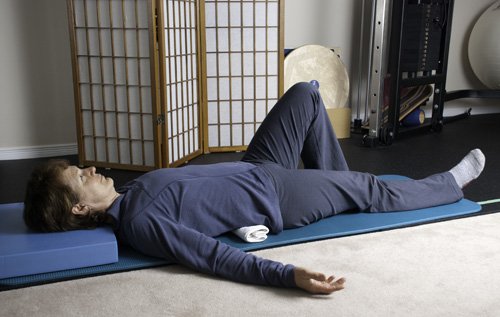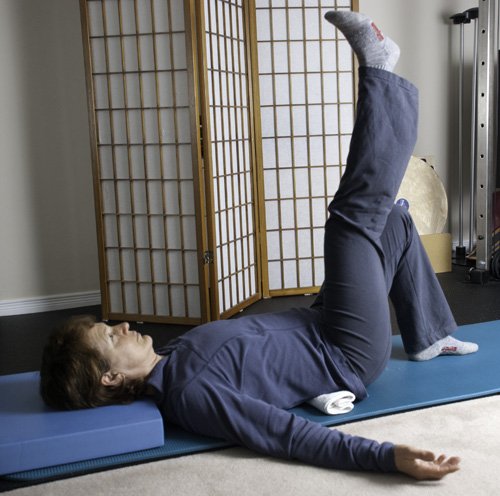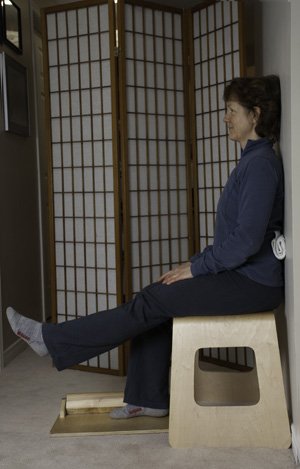Table of Contents
I was recently contacted by a Physiotherapist who completed my MelioGuide Building Better Bones course on osteoporosis prevention, treatment and management. She asked if I could suggest an alternative to the Chair Sit and Reach Test in the Senior Fitness Test.
This article is a part of my Physical Therapist and Physiotherapist Continuing Education series for Physical Therapists, Physiotherapists, Physiotherapy Assistants and Physical Therapy Assistants.
Sit and Reach Test for Senior Fitness Test
Please feel free to comment on my response and alternative suggestions are certainly welcome. Below is our exchange:
Hi Margaret,
I would appreciate your professional opinion on one of the items in the Senior Fitness Test – specifically the Chair Sit and Reach Test.
Do you have any suggestions for an alternative position?
We are opening a Cardiac Out-Patient Clinic and will be using the Senior Fitness Test for those patients who are unable to complete our full evaluation work-up. The Chair Sit and Reach Test is contraindicated for many of the patients that we will receive.
I took your course a year ago and refer to your text and videos frequently.
Hello Jane,
Thank you for your question. I appreciate you consulting with me.
If you are simply looking for a measure of hamstring flexibility, I would suggest either of the following tests:

Supine Flexibility Test
Standardize your test by having your client lie supine, a small rolled support the size of their flat hand in their lumbar area and support under their head (indicate what you use for duplication/retesting) since not all clients will be able to lay flat.
- Bend one knee so that the foot is resting beside the knee of the straight leg.
- Ask client to straighten the knee as they point the foot away from them. This will give you hamstring flexibility without limitation from gastrocnemius or neural tension.
- Cue your client to inhale, then exhale and tighten lower abdominals as they assist you in raising the straight leg up off the table/floor: “Take a deep relaxed breath and exhale and tighten your deep tummy muscles as you raise your leg as high as you comfortably can without bending your knee. Keep your foot relaxed.”
- Passively assist to where they feel tension at a level of 6 on 10 but no pain.
- Remind them to keep the knee as they point the foot away from them. This will give you hamstring flexibility without limitation from gastrocnemius or neural tension.
- Measure the angle from the floor.

Chair Sit and Reach Test
Standardize your test by having the client sit on a flat chair, both thighs supported, knees and hips bent 90 degrees, and feet flat on the floor (or use a 1 inch or 2 inch, etc lift for short legged clients. Place the same lifts on the chair for long legged clients).
- Have the client maintain a tall posture and ask him to straighten the knee as he points his foot away: “Take a deep relaxed breath and exhale and tighten your deep tummy muscles as you straighten one knee as much as you can comfortably.
- Keep your foot relaxed. This will give you hamstring flexibility without limitation from gastrocnemius or neural tension.
- Measure the degree of knee straightening: 0 degrees would be equal to full extension.

In either test, I would ask client to chose the leg of their choice or, if you have time, measure range of motion on both legs. Look forward to hearing back from you. Be well.

A Note to All MelioGuide Pros:
Please feel free to comment on my suggested alternatives to the Chair Sit and Reach Test. Let’s come up with more safe alternatives.
Physical Therapy Continuing Education
To learn more about how to Physical Therapy Continuing Education, visit my page dedicated to Physical Therapy Continuing Education.

Comments
June 17, 2017 at 12:42pm
Sandy
Great suggestions - I've used the supine test (or a variation of it) with my older fitness clients, but never thought to try the sitting technique.